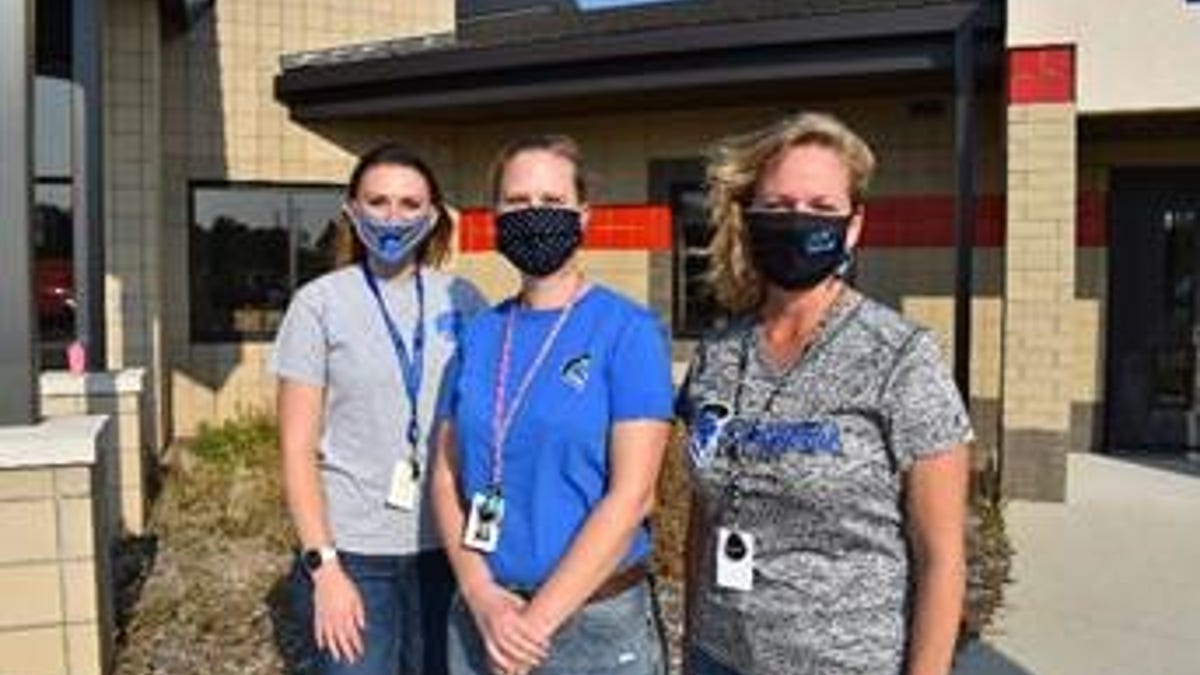Patriot Awards 2020: Mary Peter receives 'K9P4P Veteran Service' award
Mary Peter has been working to save the lives of dogs and provide loving homes for our furry friends since 1987 and has an extensive history of dog training and rehabilitation. She founded K9 Partners for Patriots in 2013, which provides service dogs to veterans at no cost.
In 2020, our nation faced a cascading effect of problems brought on by the coronavirus. A novel pathogen rapidly evolved into a highly contagious disease that quickly spread across the globe. The subsequent surge in COVID infections then led to sweeping lockdowns, which led to widespread unemployment and loss of businesses. Ultimately, this has led to millions of Americans being forced to make excruciating choices on what bills to pay or how to go about feeding their families until they could return to work.
For many of us, Thanksgiving will look a little different this year—gatherings limited, masks worn. However, millions of our fellow Americans will be faced with a more sobering reality as they are forced to turn to food banks for help this holiday season – many of which for the first time in their lives.
Feeding America is our nation’s largest hunger-relief organization. Since the onset of the pandemic, their network of 200 food banks and 60,000 partner food pantries and meal programs has been working around the clock to help ease families’ anxieties about where they will find their next meal. They estimate that one in six people will face food insecurity in 2020. Of those being served, forty percent will be new to charitable food assistance.
It is painful to know that there are so many of our fellow citizens who don’t have enough to eat on any given day. In communities large and small, millions of families are found asking themselves questions that no one living in the wealthiest country on Earth should have to ask themselves: How will I put food on the table if I lose my job? Do I pay to keep the lights on or buy groceries instead?
FOX NATION TO PRESENT SECOND ANNUAL PATRIOT AWARDS TO HONOR AMERICAN HEROES
A national hunger crisis: by the numbers
Prior to the pandemic, the Feeding America network served roughly 40 million people each year. While that number is still far too many, it was the lowest food insecurity rate the U.S. had seen in twenty years.
However, due to COVID-19, they are now projecting food insecurity to hit 50.4 million people this year– a staggering 15 million person increase from pre-pandemic times. This means that 75% of U.S. food banks are serving more people than they were last year, with an average increase of 56%.
CLICK HERE TO GET THE OPINION NEWSLETTER
From the beginning of March through the end of September, food banks nationwide distributed more than 3.7 billion meals to people facing hunger in the United States. In September alone, food banks gave out 56 percent more food than an average month. If people continue to visit food banks at this rate, the Feeding America network will provide an incredible 6 billion meals this year.
“The Perfect Storm”
Since the crisis began, food banks have faced a “perfect storm” that includes surges in demand, declines in food donations due to supply chain challenges, fewer available volunteers, and other disruptions to the charitable food assistance system’s operating model.
#AmericaTogether
How did Americans respond? As you’d imagine -- like the patriots they are – they lent a helping hand. Upwards of 2 million people have volunteered to meet the demand.
Meet a few of them:
Feeding America: Rapid City, South Dakota
Pastor Holly knows that you can’t feed people’s souls unless you first overcome their hunger.
Holly Sortland -- the pastor at Open Heart United Methodist Church – recognized the increased need in their neighborhood and took action, organizing a monthly food pantry and meal.
More from Opinion
She says, “We’re located within a one-mile radius of three Title 1 schools, meaning that at least forty percent of those kids are at or below the poverty line. As a pastor, I try to feed people’s souls. But people’s souls can’t be fed if they’re hungry. Food is one of our most basic needs. If you want to reduce poverty, start at ground zero — making sure people are fed. I encourage people who give to attend a feeding event, so they can see peoples’ eyes light up once they get that food.”
However, Holly goes above and beyond – committing to doing more than just hand out food, but also practice what she calls radical hospitality.
“The congregation will come in and cook, and we serve a meal here. We have activities for children. We also have a free clothing store, so they can shop while they’re waiting.”
And in the unprecedented times we are in, Holly reminds us:
“There’s no shame in asking for help or showing vulnerability. Anybody can be just one event — one accident — away from poverty. Any of us might need help one day.”
Feeding America: Food Bank of Iowa
Michael, who works with Polk County Veteran Affairs and is a veteran himself, loves to give back to the community and help serve veterans in need.

Michael, a volunteer in Iowa who works with Polk County Veterans Affairs. (Courtesy: Food Bank of Iowa)
"Throughout the community, there is a need for food wherever we go. Veterans have obstacles that the rest of the population doesn't have. Many have combat experiences, mental health conditions, and physical conditions due to their service. Many don't reach out for help because they are trained to live independently and work on their own resources. They aren't usually the first ones to reach out for help when they need it."
Feeding America: West Michigan
Hunger is a devastating reality that many children in West Michigan and the Upper Peninsula are faced with. Cinda and Jodi are community school coordinators at elementary schools in the region. They are passionate about ensuring kids have access to the resources they need, especially food. That's why they host monthly Mobile Food Pantries in partnership with Feeding America West Michigan at local elementary schools.

Cinda and Jodi are community school coordinators at elementary schools in West Michigan. They host monthly Mobile Food Pantries in partnership with Feeding America West Michigan at local elementary schools. (Courtesy: Feeding America West Michigan)
Before she became a community school coordinator (CSC), Cinda was a behavioral interventionist at Sparta Schools and saw first-hand how hunger and lack of sleep affects kids.
"You could see the dark circles under their eyes and just tell they weren’t getting the nutrition and sleep and safe environment they needed."
For Jodi, hunger hits home.
"There was a time when I was a kid I would’ve been one of those who had to take advantage of this. We were food insecure a long, long time. I knew then I had to help kids like I was helped when I was little."
"I had a little guy in [my office] Monday who had just moved into a motel," Jodi shared. "I said, 'do you have enough food?' and he said, 'no, but I have breakfast and lunch here.'"
COVID-19 has created a “new normal” that is likely here to stay.
Many of our neighbors who were employed prior to the pandemic may now find themselves laid off and in need of a little extra help feeding themselves and their families. And that’s where food banks step in. But—they can’t do it without your help.
We are all in this together.
CLICK HERE TO GET THE FOX NEWS APP
If you would like to join the countless patriots who are already helping to keep food banks strong, consider providing shelf-stable foods or making a small financial donation. Every $1 you give can help provide at least 10 meals to families in need through the Feeding America network of food banks.
And of course, volunteer your time and talents when possible. Fifty-one percent of all food programs rely entirely on volunteers.
To learn more about the response in your local community and how you can help, visit: https://www.feedingamerica.org/take-action/volunteer





